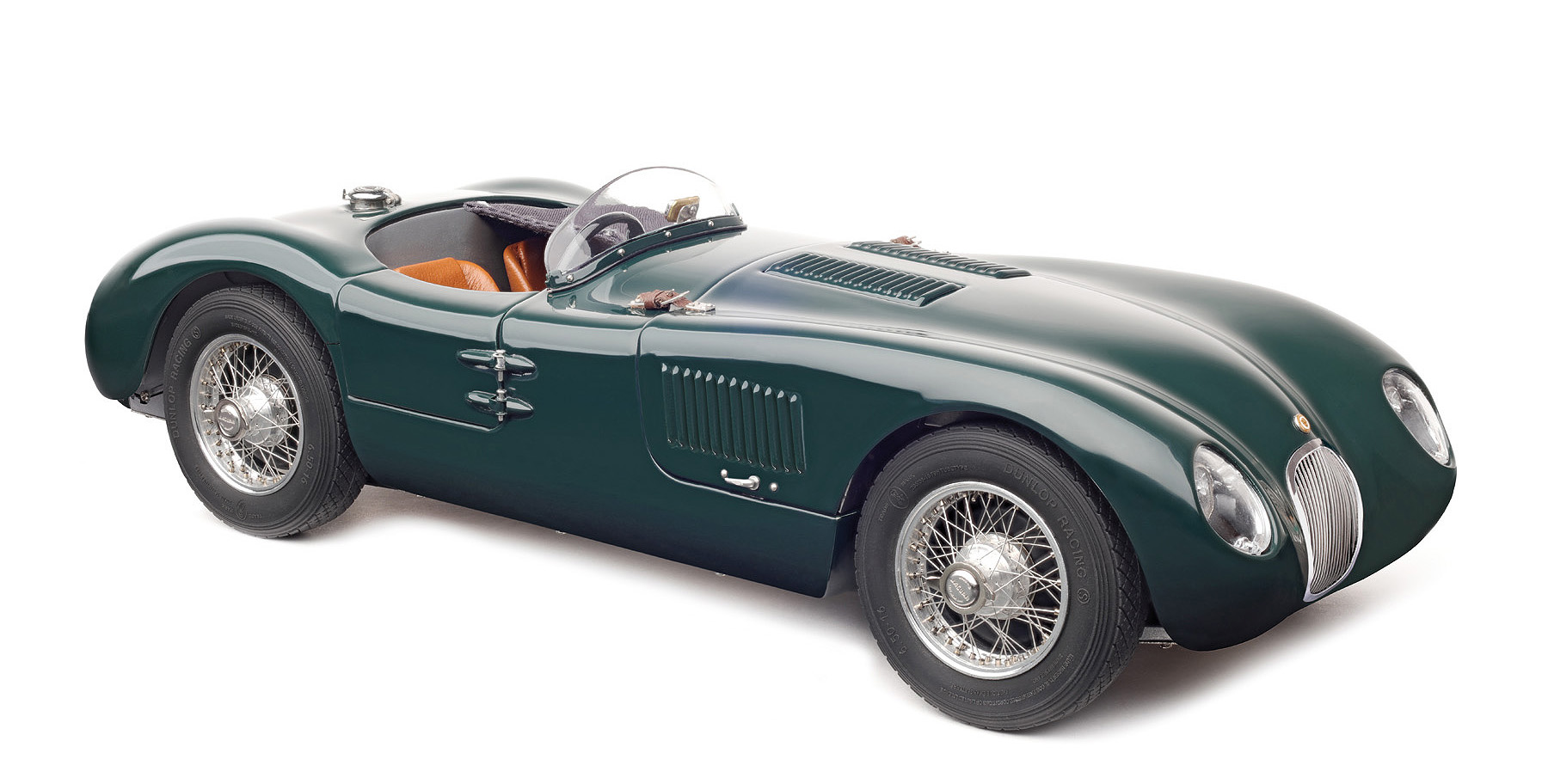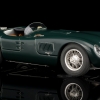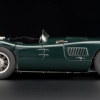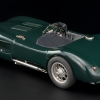CMC Jaguar C-Type, 1952 (British Racing Green)
The decade of the big cat began in 1949 with the magnificent sports car XK120 and led to probably the most beautiful automobile ever, the type XKE – better known in continental Europe as E-Type. The C-Type developed for use in motorsport in 1951 from the XK120 was completely new except for the optimized engine.
$ 600.00
MODEL DESCRIPTION
- Metal precision model hand-built from 1,155 parts
- Flip-open and lockable engine hood
- Realistic replica of the straight six engine complete with encircling components, pipes and cabling
- Metal exhaust pipes
- Triangular front axle with wishbones, hydraulic shock absorbers, longitudinal
torsion bar suspension, all made of metal - Rigid rear axle with transverse torsion bar suspension, hydraulic shock absorbers, longitudinal links, all made of metal
- Radiator grille hand-made of stainless steel
- Detailed replication of the cooling system
- Detailed fuel and oil circulation
- Authentically-replicated hinged fuel cap
- Driver´s door openable on realistic-looking hinges
- Upholstered leather-covered driver and passenger seats
- Perfectly crafted wheels with stainless-steel spokes and nipples on alloy rims
- Screw-on central locking nuts with right-/left-handed threads
- Elegant and brilliant finish in original British Racing Green
HISTORY (ORIGINAL VEHICLE)
The Jaguar C-Type has a proud racing history and from today’s point of view is the beginning of Jaguar Cars Ltd’s impressive motorsport program. The XKC was born out of the idea of William Lyons – not a “sir”at this time yet and his Chief developer William Heynes in the late summer of 1950. The two wanted to give the sporting image of the brand a lasting boost and demonstrate the result to the international audience and potential buyers in the following year in Le Mans. Quod erat demonstrandum!While the drive of the brand new C-Type built on the proven engine of the XK120, its robust, but weighty chassis has been replaced by a very lightweight tubular frame. The Jaguar Cars Ltd. developed three different variants of the C-Type:The first variant were the three “pre-production” racing cars of Le Mans in 1951 – which reached their destination incidentally on their own wheels – equipped with drum brakes, two SU carburetors and eye-catching air outlets on the hood. The second variant was the production vehicles built from 1952 – from chassis number XKC005 to XKC049, also with drum brakes and SU carburetors, but with swept air outlets on the hood. The last evolution of the C-Type were the factory race cars 1953, which differed from the customer XKC but in some features: The revised engines showed three Weber double carburetor type 40DCO3, the body was handmade using very thin alloy sheet-metal, even an airborne rubber fuel tank was used. Jaguar installed Dunlop disc brakes and a servo amplifier for brake pressure support for the first time. For improved roadholding in Le Mans, the rear axle got an additional support and the front axle got a stronger anti-roll bar. The reward of their work invested: Game, set and victory. On June 14, 1953 at 16:00 the Jaguar Boys had their job done. The Jaguar C-types literally rolled down their competitors, with first, second and fourth place finishes.
TECHNICAL DATA (ORIGINAL VEHICLE)
- Sports car built on a tubular frame
- Body shell made of extra thin alloy sheet metal
- 3.4-litre 6-cylinder in-line-engine
- Two valves per cylinder controlled by two overhead camshafts
- Dry sump oil lubrication
- Mixture preparation with two SU 2”-carburettors type H8/9
- Coil/ capacitor ignition, one plug per cylinder
- Four-speed manual gearbox mounted to the engine
| Maximum output: | 200 HP at 5,800 rpm |
| Displacement: | 3,442 cc |
| Bore x Stroke | 83 x 106 mm |
| Top speed: | 230 Km/h (depending on ratio) |
| Wheelbase: | 2,438 mm |
| Total length: | 3,988 mm |
| Total width: | 1,638 mm |
| Track front/rear: | 1,295 / 1,295 mm |
| Total height: | 1,081 mm |
| Curb weight: | 970 kg (2102 lb.) |
Downloads
Legal Disclaimer
The use of manufacturers’ names, symbols, type designations, and/or descriptions is solely for reference purposes. It does not imply that the CMC scale model is a product of any of these manufacturers.
The use of racing term and/or driver names, symbols, starting numbers, and/or descriptions is solely for reference purposes. Unless otherwise stated, it does not imply that the CMC scale model is a product of any of these racing teams/drivers or endorsed by any of them.
Related products
Products
Made with Love
Links
Stay in Contact
Shop
You can contact us from Monday – Friday
between 9am to 5pm.




















